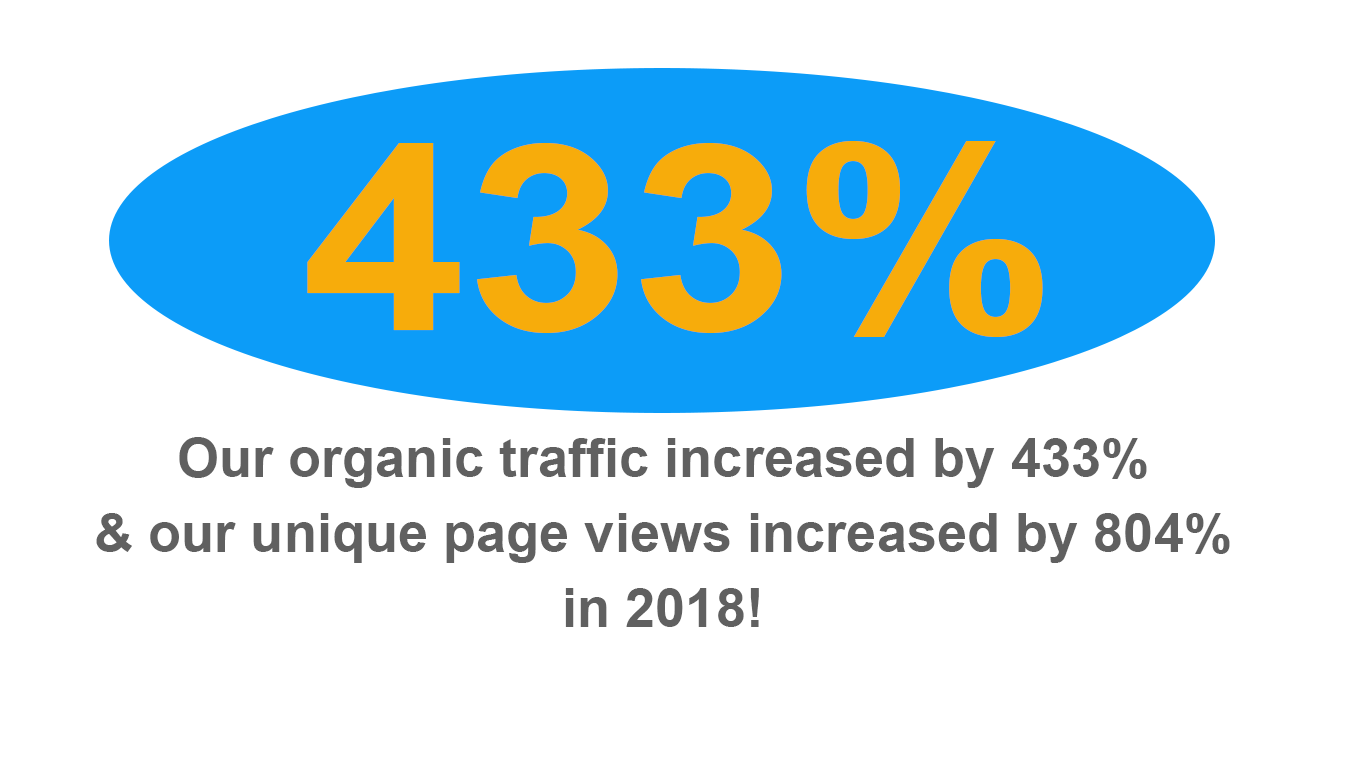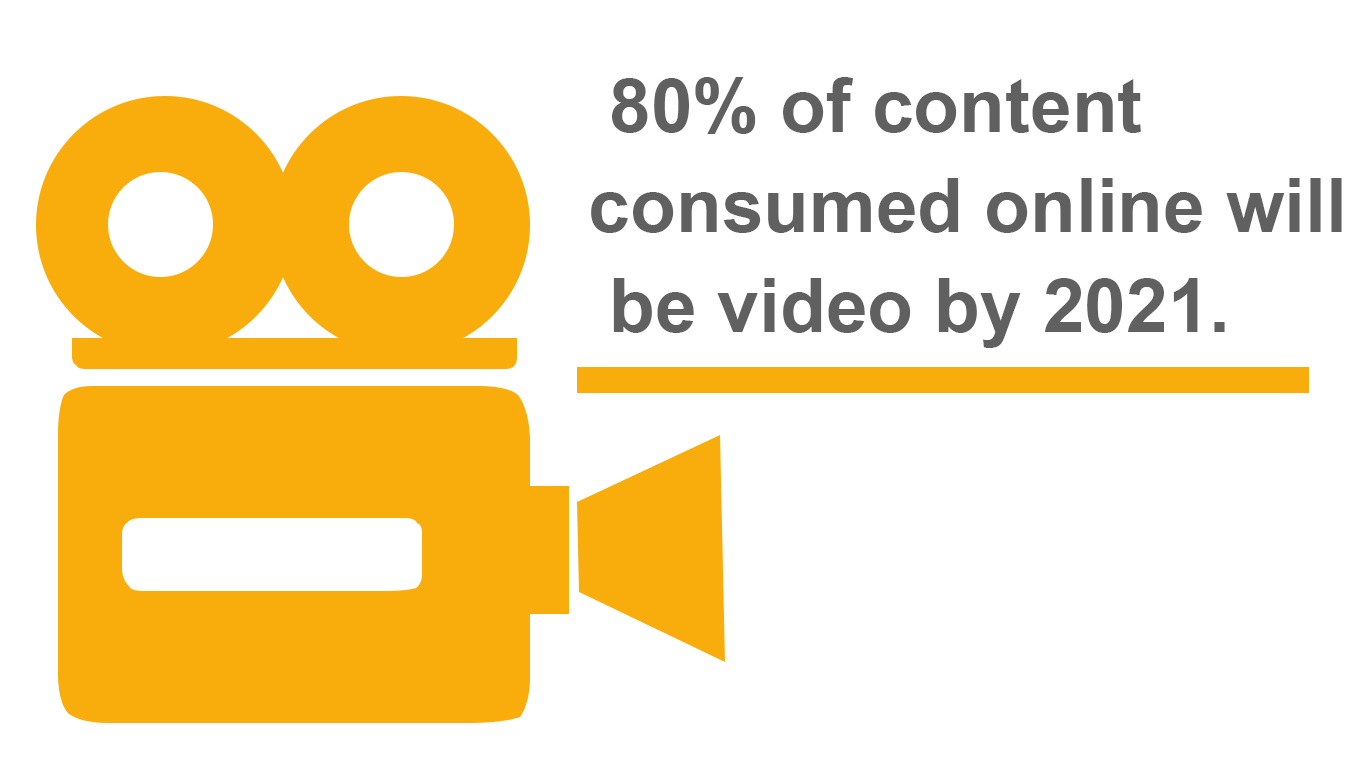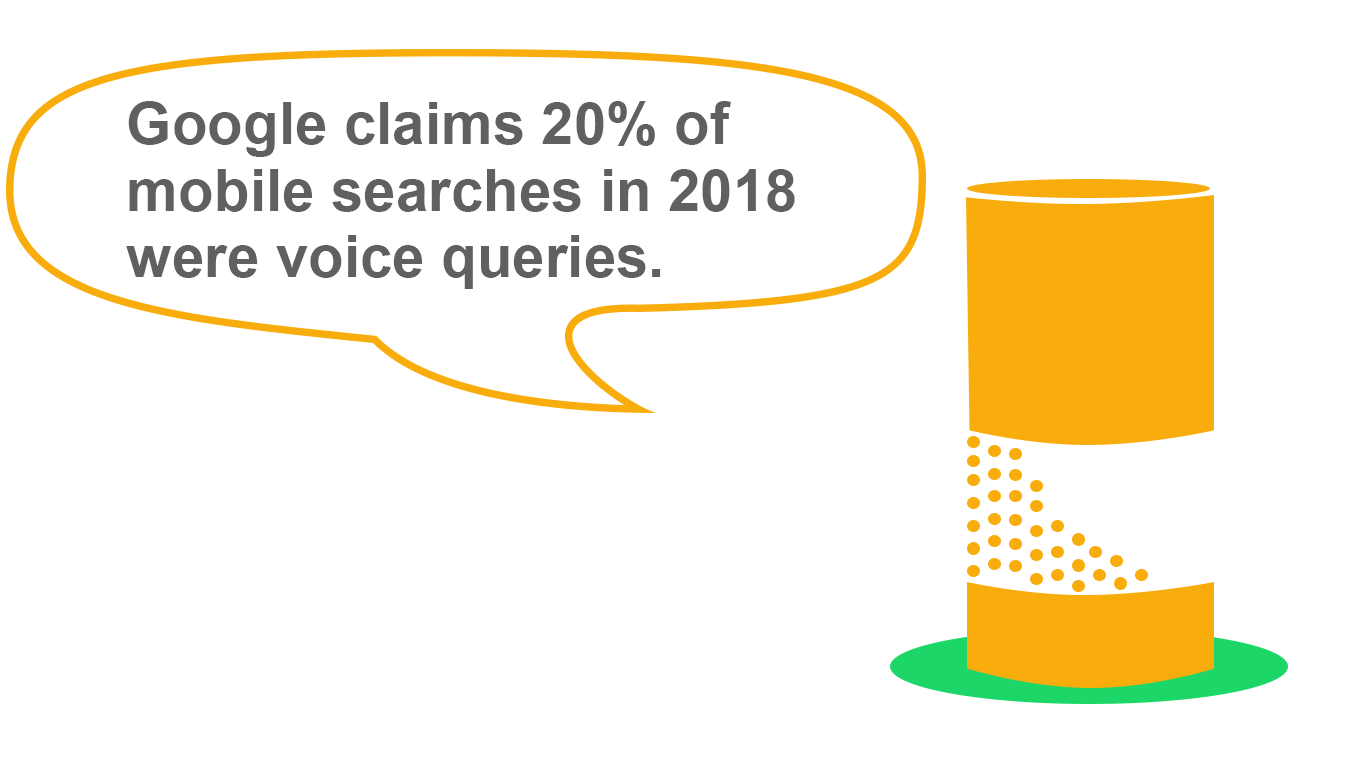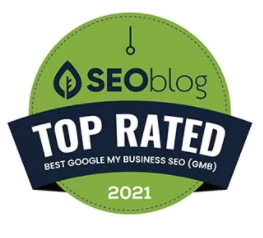As a small business owner trying to get more customers to visit your business or your website, you’ve probably read a lot of tricks and tips on how to ramp up your content marketing strategy in 2019, and beyond (cue reverb so beyond echoes forever and into oblivion, and beyond).
Lately, you may also have seen some dire predictions forecasting the death of content marketing, including blogs and websites. I’ve come across a few articles who’s tone I can only describe as, “Google ate my baby!”
Why Blogs Aren’t Lame or Dead
For example, while normally, I agree with a lot of what Rand Fishkin says, and although it’s true that Google continues to evolve and innovate, I don’t agree that it made the promise he says it did with webmasters and SEO professionals to always drive search traffic to websites.
I also don’t think that using statistics that point to overall blog readership growth leveling off are relevant to many small businesses, or local family businesses either.
Content marketing, in particular, blogging, has led to an astounding 433% increase in organic (free!) traffic coming from Google search results to the BizIQ website, and an incredible 804% increase in unique blog page views
 Furthermore, that increase in Inbound leads to our blog made it the most valuable source of revenue for BizIQ. And while it’s getting tougher for poor quality content to rank in Google search results, there’s plenty of room for companies who focus on improving the quality of their online content to dominate search results.
Furthermore, that increase in Inbound leads to our blog made it the most valuable source of revenue for BizIQ. And while it’s getting tougher for poor quality content to rank in Google search results, there’s plenty of room for companies who focus on improving the quality of their online content to dominate search results.
What content marketing strategies should small business owners focus on in 2019?
Because the end of 2018 meant lots of data, opinions, and even more predictions let’s begin my series on Content Strategy for Small Business in 2019 with 10 tips you can use to create good, unique content that will show up at the top of customer search queries.
FYI: you can also find lots of other articles with tips and tricks on content, SEO, and blogging on this very website that will help you ensure your content marketing efforts bear the most fruit in 2019 and for years to come. Plus, you can subscribe to our newsletter and have them delivered right to your inbox.
Now on to to the listicle.
1.Websites – You still need one.
Websites are anything but dead, no matter what you may have read or heard. You still need one.
Google has continued to change the way search results appear. They’ve added things like featured snippets, as well as expanded features on Google business listings that encourage users to remain on Google properties rather than clicking on a link that leads to your website.
However, to appear in customer search results, you still need a well-designed website. That includes a mobile optimized website that looks great on any size screen, from desktops to cell phones.
Google has officially switched over to what they call “mobile first” indexing. That means that Google uses the mobile version of your website as the baseline for where your business ranks in Google Search Engine Results Pages (SERPS).
2. Create 10x content
Meet the new boss, same as the old boss – create high-quality content, or have somebody help you create it. But what does high quality or 10x content even mean? It’s so vague, right? And seemingly subjective.
Of course, we can all agree that poor-quality content needs to die. How can you ensure all the pieces of content you create can compete?
✦ Are your blogs what your clients are interested in?
Make sure your content matches what your customer needs, including their interests and what they’re searching for. In other words, create relevant content. Ask existing customers and use Google and other tools to help you.
✦ What are your competitors doing when it comes to content?
Look at what type of content your competition publishes online and make yours 10 times better.
✦ Is your blog scannable? Make your content easy to read.
Use short sentences and short paragraphs. Break up your written content with professional quality images related to the topic. Consider creating a video that you can embed in your blog post.
✦ What content already shows up on page 1 of Google search results for your topic and your industry?
Research and study the content already ranking for your topic and your main keywords. Look at the subject lines that rank on the first search results page. Make your content 10 times better than the top ranking content.
✦ Make your content customer focused, not company focused.
Your customer visits your website or calls your company because they have a problem or a need. Your content website content needs to focus on what they get, on what’s in it for them and on how you can solve their problem or fulfill their need.
3. Google Business Listing
Speaking of Google, this year was really a year where they did a lot of revamping of Google My Business (GMB), including bringing back a few old features and rolling out several new ones.
I’ve already written a lot about many of the new GMB features, and if you haven’t figured it out already, I’m fairly excited about them.
Google brought back business descriptions, added a Q&A feature where customers old, and new (and competitors and trolls) can ask questions and that other customers and business owners can answer. Google also added posts to business listings and expanded features like booking and pricing information to hotel listings.
All of the latest Google business listing features give you more opportunities to connect with people and build relationships with your customers. The way you do this is with, you guessed it, high-quality content.
Bare minimum, that means filling out your business description, monitoring and responding to customer reviews, and answering customer questions on your GMB listing. You should make sure you fill out every area you can and post photos, video, and updates on your business listing regularly.
4. Video
If you haven’t started incorporating video into your small business content marketing strategy, then 2019 is the year to get started.
Business and marketing blogs like to throw around the statistic that 80% of content consumed online will be video content by – take your pick – 2019, 2021, and today I heard 2022. Add to those numbers the fact that people retain 95% of information when it’s delivered as video.
You don’t need to spend lots of money on equipment to make and post videos about your small business. The phone on your camera can capture high-quality video. Just make sure it’s not dark.

To edit your video, you can use free apps or a subscription service like Biteable. Alternatively, if you have a larger budget, you can hire a video marketing company, or hire an in-house video production person.
You can post your videos on social media sites like Facebook, on YouTube, and embed them into a blog post.
4. Update Old Content
Everybody always wants to focus on what’s next, but what if I told you that you probably have some old blog posts that could use updating?
Yes, you still need to publish new content consistently, including blog posts and content on your business listing, but you can also go back and look at optimizing older content that’s still relevant, but that isn’t ranking, or that dropped in Google search results.
The process is very similar to what you might do when you produce new content. Identify content that should rank better, then evaluate it for keywords, formatting, grammar, and other elements that will transform it into high-quality 10x content.
And just like new content, take a look at what ranks in Google SERPS for your keywords and what your competitors have written about the same topic, then make your old content better. You can also take the time to optimize your content for voice search and featured snippets, but more about that later.
6. Voice Search
Voice Search is a buzz term you’ve probably heard a lot about. With Amazon reporting that Amazon has sold 100 million Alexa devices through the end of 2018, and Google’s claim that 20% of mobile searches were voice queries, it’s time for small businesses to start thinking seriously about voice search results.
But what does it mean and how can you create content for it? The good news is that by utilizing all the tips we’ve talked about so far to up the quality level of your website and your small business blog posts, you’re well on your way to optimizing your content for the predicted voice search revolution. 
In addition, familiarize yourself with all the new Google search results additions like featured snippets, Google Image search, and Google Top stories as well as how to create content that can compete for these spots.
Better yet, hire digital marketing professionals who already know how to develop and optimize content that has the potential to capture the top positions in Google search, including these latest additions.
7. Keywords still matter
Search Engine Optimization (SEO) is far from dead. In fact, it’s more vital than ever. And keywords are still important.
However, the old practices of keyword stuffing have been out for several years now, so you need to stop it if you’re still doing it.
I’m serious. Because I will find you and slap you if you’re still doing keyword stuffing your content in 2019.
Use primary keywords as a rough content guide, but focus more on choosing a topic around keywords, including questions people ask, and sub-topics related to your main topic. That way, your keywords will occur naturally, and other secondary, related keywords will also be included in your content.
Forcing keywords usually doesn’t work. Furthermore, Google’s search algorithms can recognize variations of your keyword, so synonyms and alternate phrases besides your exact keywords are an effective way to avoid keyword stuffing as well as in the creation of 10x content.
In addition, you can usually separate your geofocus from your keywords if not separating it makes your content sound, well, awkward. For example, if your keyword is shower and your small business is located in Anytown, Minnesota, you do not have to write something like:
‘When your shower breaks in Anytown, MN, you can rely on Acme Bathroom Repair to fix it.” Instead, write something like, “When your shower breaks, you can rely on Acme Bathroom Repair, in Anytown, MN.”
8. Images
Gone are the days when you could just post blogs with no graphics or photos, or only one large image below the title. These days, you want to use images (and video) throughout a blog post.
No, you don’t want to have pictures every sentence or even every paragraph, but every other section to every section in a list post is probably a good rule.
You want to use images that help communicate your article’s message, go with your company’s brand, and break up content, so it’s easier for your customers to scan and remember.

In addition to the improvements in user experience (U/X), your content also gains a potential SEO boost. Content with images tends to rank higher in Google search results, and high-quality images can help you rank in Google Image search as well.
9. Social Media
You probably read about Facebook making major changes to its news feed algorithm in the summer of 2018.
These changes mean it can be harder to show up organically on your customers’ newsfeeds, even when they like, follow, and save your page to signal they want to see your updates.
But does that mean you should give up on Facebook and other social media channels like Twitter and Instagram? Definitely not.
2019 doesn’t mean the end of free and organic social media for small businesses. It just means the end of spammy organic social media. Or rather, that those tactics won’t help you show up in your potential customers’ Facebook feeds. 
Instead, you need to get more personal and interactive with your posts. Invite discussion and use your social media pages and posts to build relationships with customers.
If you do have a little bit of a budget to invest in social media in 2019, Facebook has some of the most powerful ad targeting that’s also affordable.
You can boost your organic posts, and create Facebook advertising campaigns to help drive customers to your small business, whether that’s a phone call, an email, or a form fill on your website.
10. Email Marketing Campaigns
Although email marketing has been around forever, and its death has been announced almost annually, it’s still alive and well. It’s also extremely powerful. Plus advances in marketing automation make personalizing email messages and email newsletters even easier.
You definitely don’t want to spam your customers, but things like newsletters and segmented email lists with targeted messaging specific to groups of customers depending on where they are in their decision process mean email will continue to have lasting power in 2019 and beyond.
Just like all the other content channels we’ve mentioned, with email in 2019, you want to focus on quality and not quantity. That also means focusing on personalization and using email marketing to build relationships with new customers as well as to deepen those with current customers.
When it comes to emails, you want to make them easy to read with images, and video, but not too many.
You also don’t want to give everything away. Entice people to learn more by clicking on a link to an offer, or a blog post, or another video.
And don’t make your email content endless or cluttered. Again, the idea isn’t to spam your contact list, but provide the right message for the stage your customers are in, and to provide information they’re interested in.
Final Thoughts
So there you have it, 10 strategies or tactics to crush your competition with content marketing.
The key thing I want you to take away from my tips and predictions, as well as every other list of content marketing predictions for 2019, is the quality of your content is more important than how much content you’re sharing on your blog, on social media, or by email.
And don’t worry if you can’t focus on all 10 areas. You need to start with where your business and your budget is, then build the other areas.
If you can only pick 2 things, I’d start with your Google listing and a well designed, search engine optimized website.
Regularly interact with your customers through your listing and your website. Maybe add a social media page and interact with customers there.
After that, use your phone to take photos and video you can share or use on your website and in blogs.
You don’t have to have a fortune 500 level marketing budget. And you don’t have to choose one content strategy over another. Just choose the ones that will work for your small business.
What Content Strategies will you try in 2019?
What do you think? What are your plans in 2019 for taking your small business content marketing to the next level?
Let me know in the comments below. And if you want more tips like this, be sure to subscribe to our newsletter.









